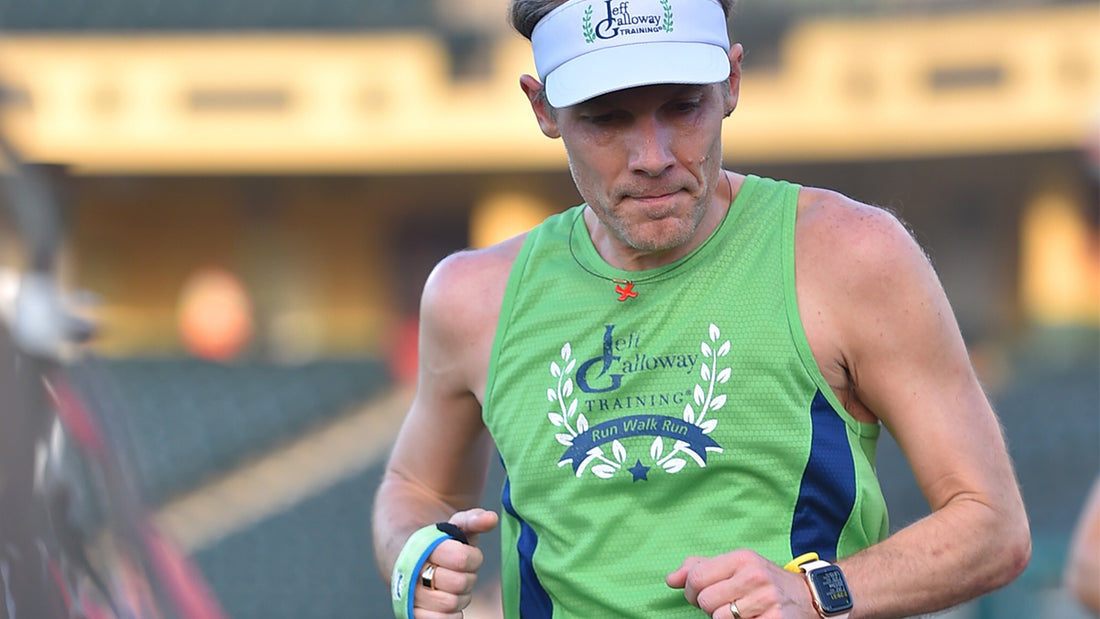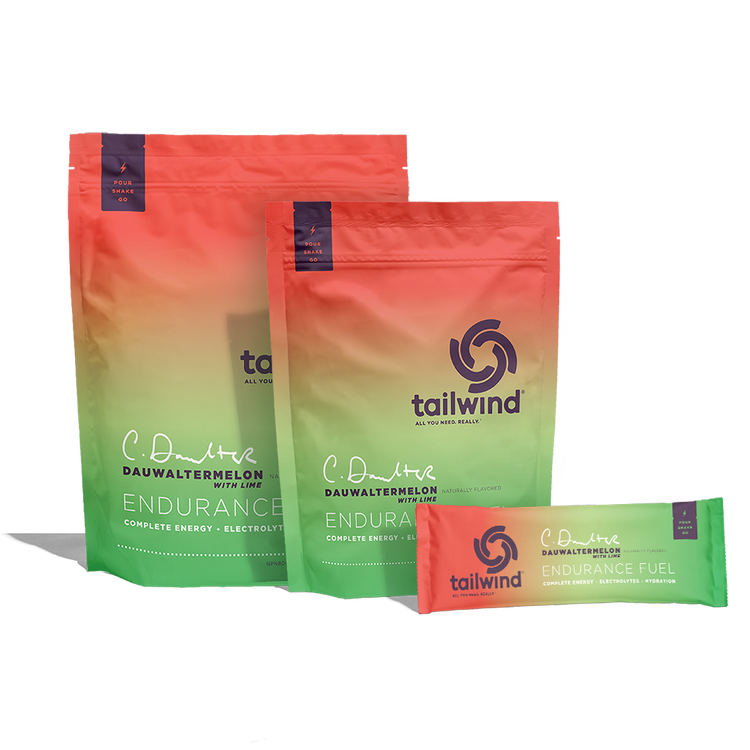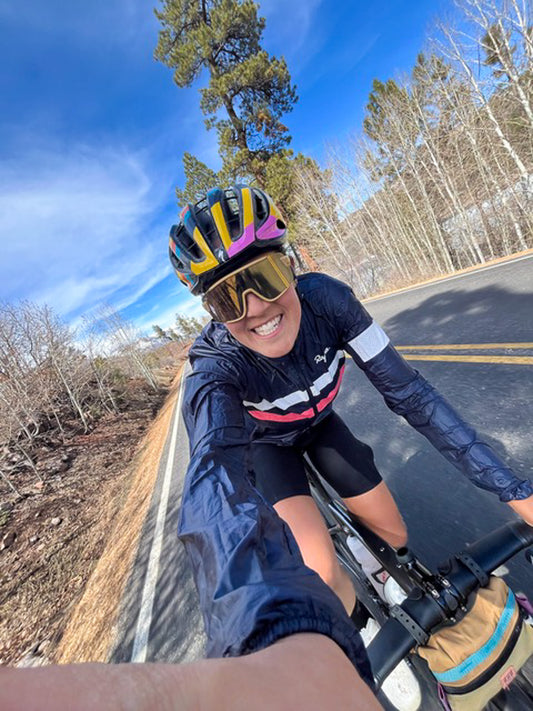How to Train for a Marathon
0 Comments
By Chris Twiggs, Tailwind Customer & Professional Running Coach
Meet Chris
I’m Chris, Chief Training Officer at Galloway Training, RRCA Certified Coach, Boston Marathon qualifier, Ironman distance triathlete, and ultra-runner with 14 finishes at the Hardrock 100. I’ve coached thousands of runners through local Galloway Training Programs and Galloway Customized Training Plans offered online at JeffGalloway.com. My body stays in Florida most of the year, but my heart is forever in the San Juan Mountains of Colorado.
There are few things more empowering than finishing a marathon. Whether it’s your first, fastest, or fiftieth, every marathon finish is a reminder that big things are possible when you work on them step by step!
Know Where You Are
The first step in marathon training is taking an honest look at where you are in your fitness. At Galloway Training, we use a tool developed by Olympian Jeff Galloway called the Magic Mile. The idea is to run a mile (after a warm-up) as fast as you can without making yourself sick. Once you have that time, multiply it by 1.3 to see your predicted marathon pace.
Embrace the Run/Walk Approach
Walk breaks make marathon training less intimidating for beginners and slower runners. Rather than thinking about the 26 miles you have to cover, you can focus on the next few minutes you have to run before the next walk break. “I don’t know if I can run 10 more miles, but I know I can run for 2 more minutes!” is a common phrase I hear. Faster runners also benefit from the run/walk method because walk breaks keep your heart rate from spiking early in the run and therefore prevent your body from going anaerobic.
Rather than hitting a wall, run/walk marathoners often run faster in the last few miles of the race. With each walk break, runners enjoy a few seconds of recovery, allowing you to stay strong throughout the race, including those last few miles where it’s common to feel like you’re running with a piano on your back.
Set a Schedule
After determining your pace and run/walk ratio, you can chart a path to the marathon itself. Do this by scheduling a long run each weekend starting with the longest run you’ve had in the last month. Add a mile to your long run distance each weekend until you hit 10 miles. Then you can stretch your long run to every other weekend but add 2 miles each time (10, 12, 14, 16).
While your long runs should be significantly slower than your race pace (about 2 minutes per mile slower), the in-between weekends are good times to practice your race pace for a few miles (up to 8-10 miles if you’re serious about a time goal). When your long run reaches 16 miles, you can put 2 short weekends between long runs, and when your long run reaches 20, you can put 3 short weekends between long runs and increase the distance by 3 miles each time.
A typical weekend progression for a runner who currently has a 7-mile long run would be 7, 8, 9, 10, 5, 12, 5, 14, 5, 16, 5, 5, 18, 5, 5, 20, 5, 5, 5, 23, 5, 5, 5, 26, 5, 5, 5, marathon. That’s 28 weekends, so you can see why summer is not too early to start your winter marathon training!
How to Train with Less Time
Don’t have 28 weeks to train? No problem! You can jump-start your training by walking the “extra” distance you need for a long run. If your schedule calls for 16 miles, for example, and you’ve only run 7, you can walk 9 miles then run/walk 7 for a total of 16 miles. That effectively gives you the endurance you would have gotten from a 16-mile run without risking injury by increasing your running mileage too quickly. Once you’ve used this technique to get your training on track, you can pick up your schedule and continue through the marathon.
Incorporate Weekday Runs
While the long run is undoubtedly the cornerstone of marathon training, no runner can afford to rely solely on one run a week. Weekday runs are great times for hill work, cadence drills, form drills, acceleration-gliders, and speed work. Which of these you do and how often will depend on your specific race goals, but every runner should put in at least 2 runs during the week of at least 30 minutes each. Longer is fine, but weekday runs should not be so long that they cause you to be tired going into the weekend. It’s also fine to run more than two weekday runs, but every runner needs at least one rest day per week. If you can’t stand to take a day off, go for a long walk. It will still allow your running muscles to rest, and it will let you work on your walking pace, something run/walkers often neglect to their detriment.
Go the Distance
In addition to run/walk, I recommend a long run of at least race distance when training for a marathon. Many runners report a feeling of “hitting the wall” around 20 miles into a marathon, and it’s no coincidence that 20 miles is exactly how far most of those runners have gone in training. Pushing your long run to 26 miles reduces the likelihood of hitting the wall by increasing your endurance to the full race distance. It’s important to remember to keep your long runs at least 2 minutes per mile slower than predicted race pace. There is proof to show that runners who include a long run of 26 or even 29 miles in training hold their pace far more consistently than those who stop at 20.
Fuel for Success
Once you know how fast to run, how far to run and when to run, it is vital to practice for your race at every opportunity. That includes practicing and dialing in your race nutrition on your training runs. Unfortunately, marathons often choose hydration that doesn’t work very well. Often it’s too sweet, causing upset stomachs late in the race, or it neglects electrolytes that are vital to balance what our bodies lose through sweat.
For short runs, a single bottle of Tailwind Nutrition Endurance Fuel (2 scoops or 1 stick pack) should suffice. If it’s really hot, you’re a heavy sweater, or you’re going on a long run, you can create a concentrate to reduce the number of bottles you need to carry. This plan works great for marathon day as well – create a concentrated bottle of Endurance Fuel and grab extra water from aid stations to stay hydrated and dump on your head to stay cool. Endurance Fuel stick packs are easy to carry if you want to change flavors or add some caffeine throughout your race. There’s nothing like a kick of caffeine late in a race!
Don’t Forget Recovery
One of the great benefits of the above strategy is that run/walk marathoners recover much faster! Nevertheless, your body is going to remind you of your accomplishment with aches and pains after you finish a marathon.
Aches and pains can be greatly reduced with the right recovery strategy after your marathon. Some runners swear by chocolate milk and others insist on a beer, but both of those have more tradition behind them than science. Tailwind Nutrition Rebuild recovery is a much better choice to replenish glycogen stores, restore electrolytes, and start the healing process so your body doesn’t feel quite so much like it’s been hit by a truck.
Once you have the recovery process in motion, get your body back in motion by going for a walk. A few hours after your race, after you’re rehydrated and cleaned up, put on that finisher’s medal and go out on the town to show off your accomplishment and give your legs a chance to work out any lactic acid buildup from your race.
Walking a couple of easy miles a few hours after the marathon and repeating this the next morning will make a huge difference in how soon you are able to return to running (not to mention going down stairs without wincing)!
You’ve Got This
I’m often asked how much of running is physical and how much is mental, and I can honestly say that running is 100% physical and 100% mental. You have to do the physical work to train and prepare for a marathon. Without proper training, you might be able to finish the race, but you definitely won’t enjoy the experience. Likewise, you have to put your mind to work, both in visualizing your success and in believing in yourself throughout the process, including during the race itself.
The good news is that these two 100% important aspects feed off of each other. As you train physically, your mind accepts that you will succeed in your goal. As you grow in your belief in yourself, you are motivated to stay true to your training schedule and put in the miles each week that lead to race day. During the marathon, your strong body gives you confidence to run the pace for which you trained, and your strong mind keeps you focused to hang on even as you feel your legs getting heavy with effort.
Mile by mile and moment by moment you are accomplishing something as a marathoner that only a small percentage of the population ever achieves – not just a marathon finish, but a transformational experience, a clear message from you to the universe and from your body to your soul that you are not afraid of hard work and not intimidated by lofty goals because you know that any distance can be covered by those willing to take it step by step.






